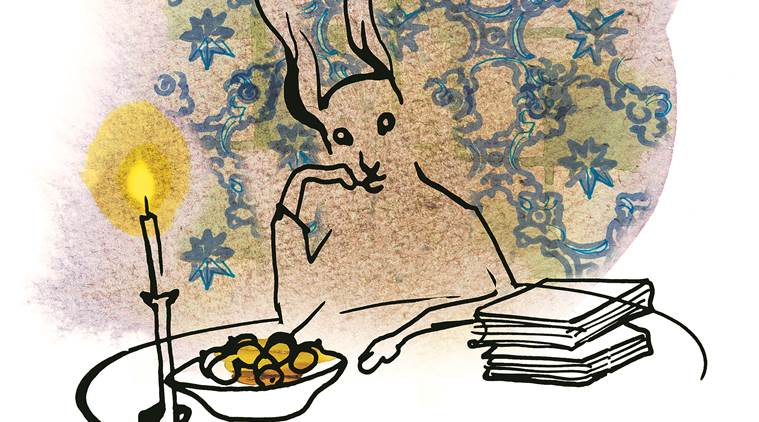Written by Ram Sarangan |Updated: December 8, 2018 12:09:13 am
The Measure of Time
Siddharth Dhanvant Sanghvi examines love and friendship in this unusual illustrated novel

When done right, narrative forms traditionally meant for children’s tales can be used to tell intricate, layered stories. Evidence of this can be found in the uncensored versions of fairy tales, Western comics, Japanese manga and now, Siddharth Dhanvant Sanghvi’s The Rabbit & The Squirrel — a poignant tale about friendship and love in an often arbitrary world.
The book begins with the sound of wedding bells, as the squirrel, a young female, is told by her parents that it is time for her to get married. As she tells her friend, the rabbit, “the chipmunk was ‘a dentist’s nightmare’. The owl was ‘wise but creepy as hell’.” This eventually leads to her parents telling her that she had to marry Count Boar, a wealthy but repulsive individual. What follows is the journey of two friends in a confusing world where beauty is often marred by the ugliness of those around them.

The parallels to today’s society are apparent; however, the story steers a fine line by ensuring that its allegorical nature does not stray too far into the territory of the parable. This is largely due to the way Sanghvi embraces the concept of writing for an illustrated book — concise and subtle. Despite — or perhaps because of — the way his writing needs to share space with the illustrations, Sanghvi makes every line count, weaving in sincerity and wit in equal measure. “You made me wait a long time,” the rabbit says upon reuniting with the squirrel after a considerable passage of time. “That’s one way to make a rabbit stew,” she replies.
Credit for making Sanghvi’s vision come alive before our eyes must go to acclaimed Swedish artist Stina Wirsén. Her illustrations bring to mind the charm and detail in Beatrix Potter and Maurice Sendak’s works. The choice of frames, too, sets the book apart — in one illustration at the start of the book, Wirsén draws the squirrel smoking a joint right before she has to meet Count Boar for the first time; another captures the two friends dancing under the moon in a beautiful splash of blue.
It is no coincidence that anthropomorphism has been key in the creation of many famous allegorical works, examples being George Orwell’s Animal Farm and Mark Twain’s A Dog’s Tale. Personifying certain very human qualities or attributes in the form of animals is an effective way of addressing issues without instantly inducing the readers to put up mental barriers.
In The Rabbit & The Squirrel, it is apparent that the squirrel’s mother and father represent a certain upper-class mentality that brooks no argument in its search for a conventional, “good” and wealthy groom. They disapprove of her friendship with the rabbit, whom they consider to be the epitome of the stereotype his species is known for (a not entirely inaccurate assumption), and want their daughter to settle down as soon as possible. It is difficult not to see the parallels to Indian society here, especially in the squirrel’s struggles to gain control over her own life. Other themes are less overt, brought up in an off-the-cuff tone and wrapped up with a one-liner or two (“I guess you got to pull rank everywhere” or “All the Squirrel’s friends envied her riches. But she knew how a diamond necklace could quickly turn into a stone choker”).
The ideas that are central to this book — love and friendship — are not often given their due consideration in “serious” literature. Such themes are often considered too idealistic or impractical to serve as good fodder for examination — and if done improperly, it can certainly turn out that way. But the way celebration, loss and longing and love are woven together into this novel is proof, if any was ever needed, that there is much to be gained in examining them.
The Rabbit & The Squirrel is a case of using only a few ingredients, but allowing every one of them to shine. Wirsén’s imagination, in tandem with Sanghvi’s economy of words, results in everything and more that one could expect. Ultimately, it comes down to the story of two friends who had the time of their lives with each other, and even when apart, grew through and because of the other. And as the book says, “The only measure of your time was the fun you had with it.”






















No hay comentarios:
Publicar un comentario